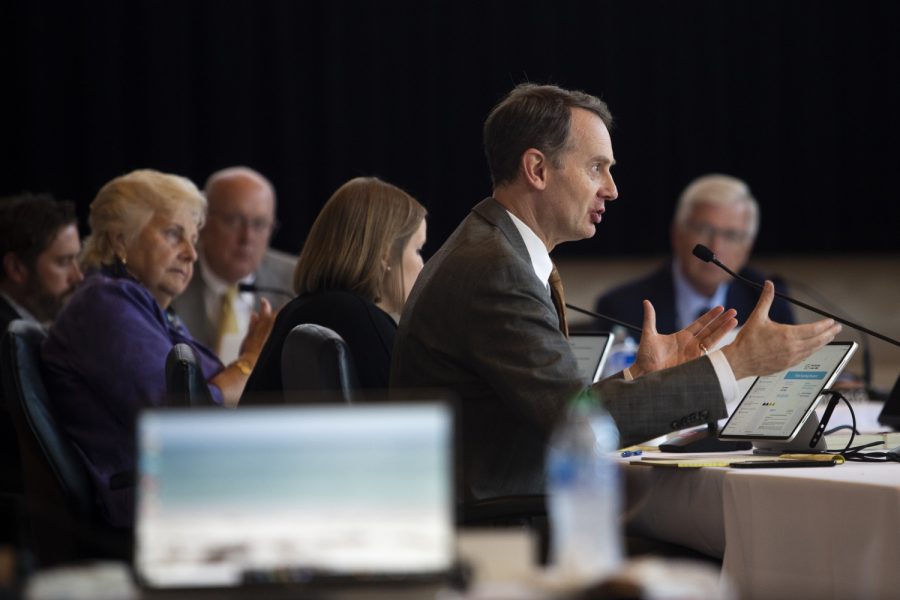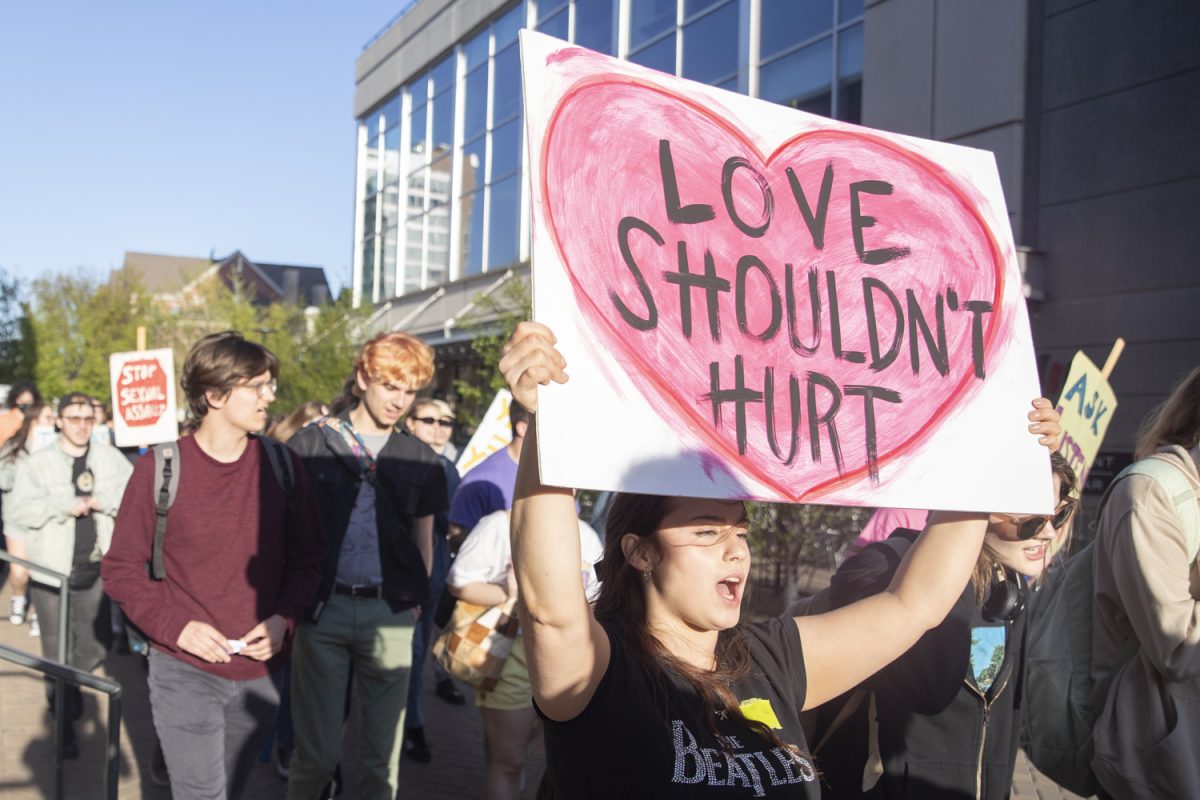Election Day in Johnson County was a day of breaking records. This year’s presidential election saw the number of voters in Johnson County increase over the number from the 2008 presidential election.
Johnson County counted 75,463 votes, up from 73,231 in 2008. This year’s voter turnout is 82.58 percent of the registered population.
“It’s an all-time record,” Johnson County Auditor Tom Slockett said.
However, he noted that these numbers are not official until the canvass Nov. 14. He expects the numbers to continue to increase and more ballots arrive in the mail that were postmarked no later than Nov. 5.
“The total voters will increase,” he said. “More ballots will come in the mail.”
Turnout wasn’t the only record broken.
Slockett said 58 percent of registered voters in Johnson County voted early, an increase over 2008’s 55 percent.
Iowa began early voting on Sept. 27, allowing 40 days of early voting. As of Nov. 5, 673,124 Iowa residents had voted early this year.
Slockett believes the increase in the number of voters this year is not just due to the increase of early voting.
“It was both — more people voted and a higher percentage of them voted early then ever,” he said.
The day started off slow.Slockett reported via his Twitter that, as of 9 a.m., Johnson County had the lowest turnout in 32 years.
However, Election Day saw an increase in turnout as the day progressed. The afternoon and evening hours, after work and school let out, welcomed the most voters to the polls.
At around noon, the Quadrangle Precinct 3 polling location had seen a pretty consistent march to the polls.
“It’s been steady all day long,” said Debra Stannard, the head of Precinct 3.
Iowa City alone saw 13,603 voters by 8 p.m., with a large increase after 3 p.m. The difference between the morning and afternoon hours were stark.
“There has been a trend of a higher turnout later in the day in high-turnout elections,” Slockett said.
Cary Covington, a University of Iowa associate professor of political science, predicted a decreased turnout nationally, especially among younger voters.
“The issues that [the campaign] taps into are not as inspiring to people [as they were in 2008],” he said.
The big difference is in Obama’s campaign. The 2008 campaign stood out in its inspiration of voters, while this year’s does not.
“His appeals are more mundane,” Covington said, referring to Obama’s push to continue things the way they are. “That really doesn’t pop out to younger voters.”
The motivation that brings voters to the polls also can vary from place to place.
“They vote on the issues most important to them,” Covington said.
For voters in Iowa, those issues may be different from other states. Covington said most states are focused on the economy — but because Iowa was not hit as hard, he does not think that is as large a driving force.
Even though the early voting takes voters away from voting on the actual Election Day, Covington believed it would increase voting overall.
“It will cause voter turnout to be higher than it would without early voting,” he said.






